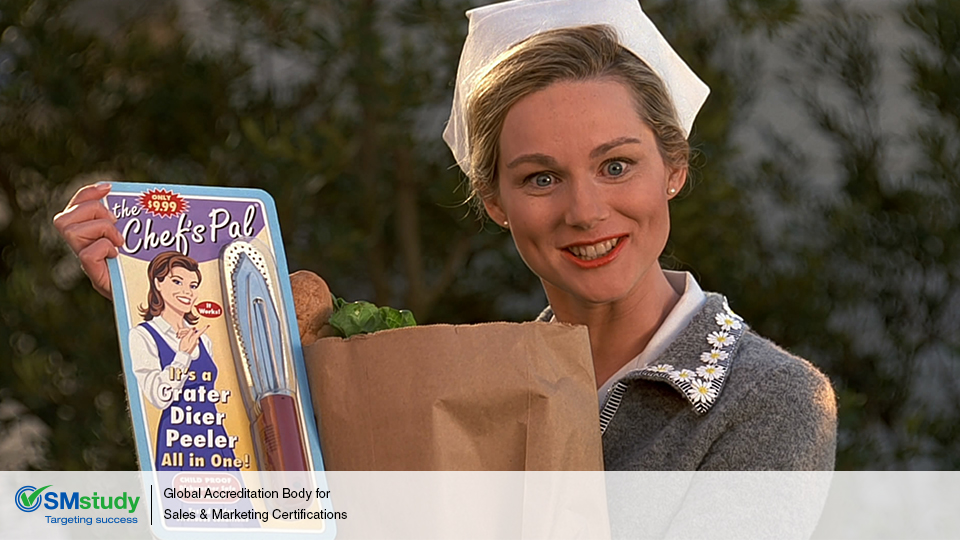In the 1998 film The Truman Show, a man named Truman Burbank, played by comedian actor Jim Carrey, stars in the ultimate reality show. At the film's onset we learn that Truman is the first person to be adopted by a corporation and that since the time of his babyhood, Truman has been used, unbeknownst to him, as the star of his own real-life reality show, a show that entertain millions of viewers worldwide as it unfolds in real time.
But there are other stars with whom he unknowingly shares the show; the ceaseless parade of products cleverly woven into the artificial tapestry of the stage set Truman calls home.
With no way to break for commercials, since the show is live 24/7, product placement is the obvious choice for advertising. Snatching at any opportunity to slip in a plug for gardening sheers or vegetable peelers, Truman’s family and friends (all actors) awkwardly discuss the merits of wares and services within the program. Everyone is “in the know” on the embedded product “advertisements”, everyone except Truman. He moves through his staged world unaware of the exaggerated enthusiasm with which his “friends and colleagues” discuss a certain beer or truck.
The film’s director, Peter Weir, uses the film as an opportunity to turn the camera on itself and satirically question the part product placement plays in Hollywood. In The Truman Show, Weir is clearly reflecting the reality of the ascent of product placement in films in the 1990s, because although product placement has been seen in film since the early 20th century, the golden age officially began with the release of Spielberg’s ET in 1982. Anyone remember Reece’s Pieces?
It’s been observed that over the last few decades we’ve seen an increase in the amount of product placement in both films and television according to Dr. Mary Lou Galician.
In her book, Handbook of Product Placement in the Mass Media: New Strategies in Marketing Theory, Practice, Trends, and Ethics, Galician states, “What is most important regarding the evolution of product placement is the increasing number of high-involvement placements found during the 20-year period of the study. These high-involvement appearances nearly doubled from 1977 to 1997, further indicating that product placement has become an integral aspect of making Hollywood movies.”
So, what does this mean for marketing strategy?
As Dr. Galician points out in her findings, which cover a 20-year analysis of Hollywood films, product placement is on the rise. This will mean continued opportunity, but also continued competition and possibly threat. The SMstudy Guide, Marketing Strategy book states that opportunities and threats should be determined before embarking on a marketing campaign. In considering product placement as a marketing option, opportunities may include reaching a larger or more responsive segment of the market. Threats may include negative backlash or a company may simply find they are priced out of that particular avenue for marketing their product.
Additional opportunities may arise in the growing opportunities for other film-related product marketing. Dr. Galician notes that there has been a rise in product “tie ins” and “cross promotion” creating more marketing opportunities and greater integration between film and consumer products and services.
As stated in Marketing Strategy, first book of the SMBOK (or SMstudy Guide), potential innovation should always be considered when planning a marketing campaign. New and innovative ways to integrate a product with a film or television show are in continual research and development.

